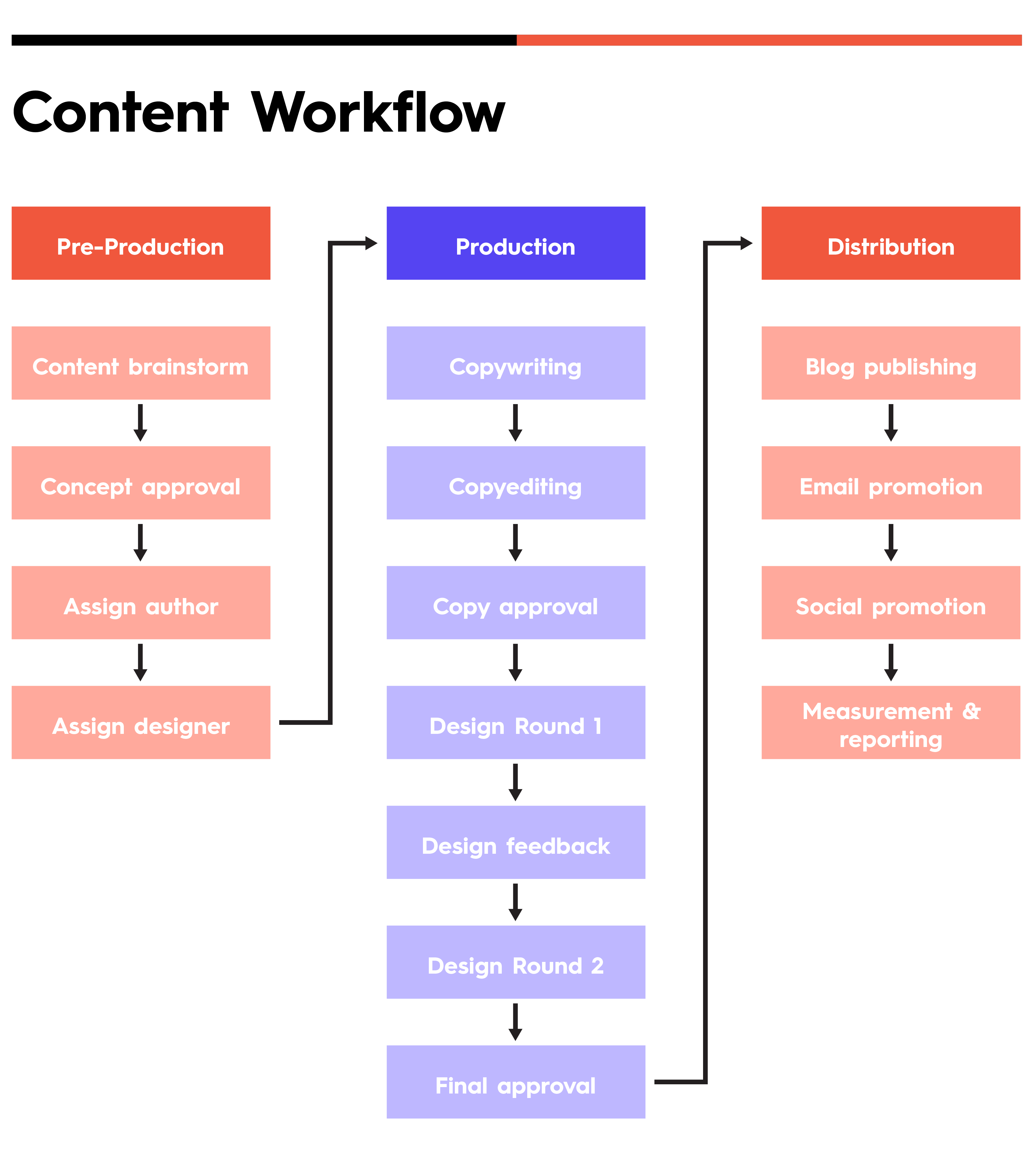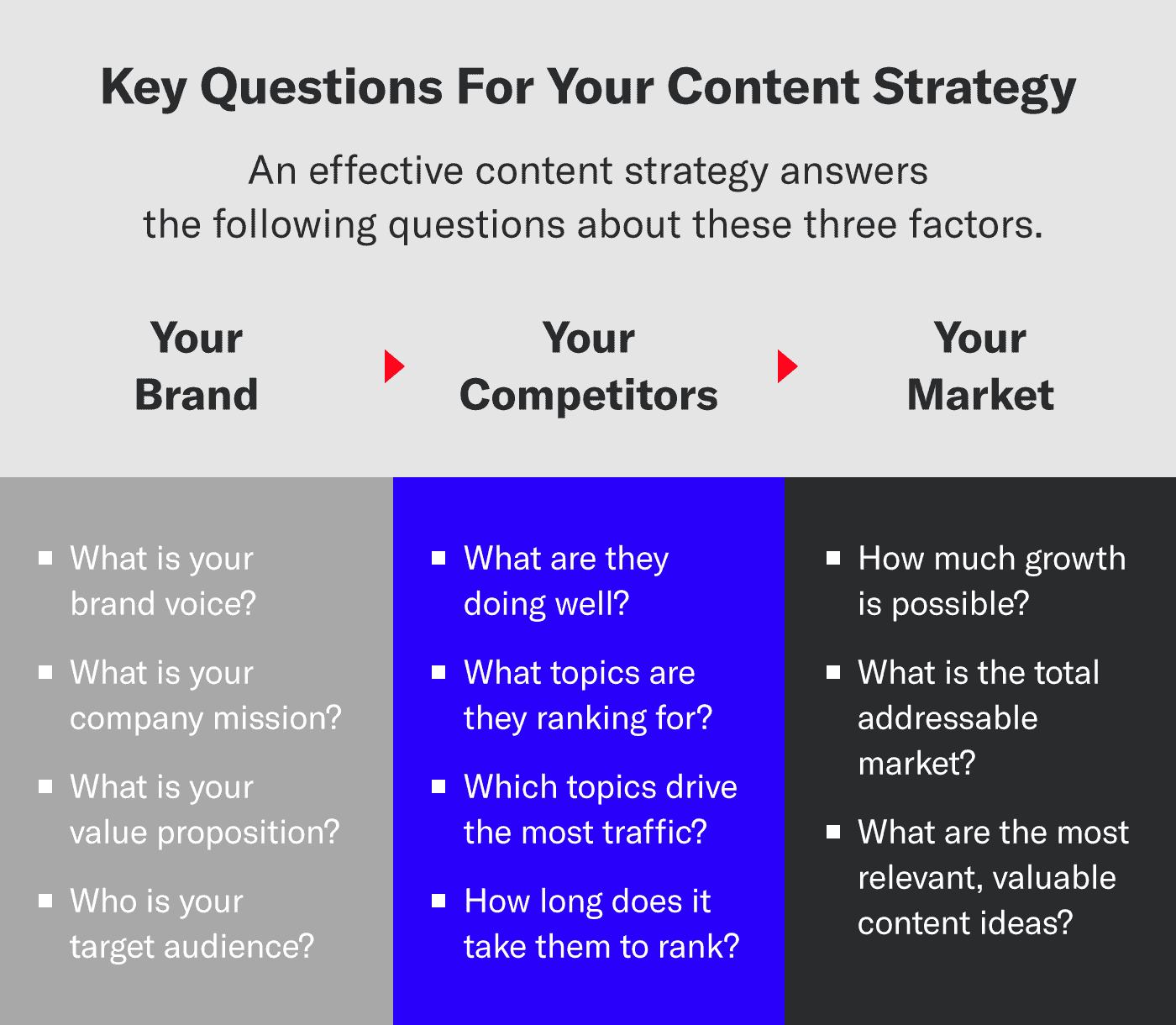How a Content Strategy Agency Boosts Client Involvement
How a Content Strategy Agency Boosts Client Involvement
Blog Article
Measuring the Success of Your Content Technique: Necessary Metrics to Track
In the realm of electronic advertising and marketing, the performance of a material strategy is frequently gauged via different metrics that mirror both reach and effect. While traffic metrics provide a fundamental understanding of audience interaction, it is the mix of engagement and conversion metrics that truly discloses the deepness of material vibration and its financial effects.
Web Traffic Metrics
In the world of material approach, recognizing web traffic metrics is essential for reviewing the efficiency of digital initiatives. These metrics supply insights into customer habits, assisting companies establish the reach and effect of their material. Secret website traffic metrics consist of page sights, one-of-a-kind site visitors, and session duration, each offering unique perspectives on audience engagement.
Web page sights suggest the complete variety of times a website has been viewed, while distinct site visitors determine the variety of distinct individuals accessing the content, therefore eliminating replicate counts. Tracking these 2 metrics with each other enables a detailed understanding of material intake patterns. Furthermore, session period reveals just how long users are communicating with the material, supplying understandings into its significance and interaction level.
This information is vital for refining advertising techniques and optimizing material distribution networks. By concentrating on web traffic metrics, organizations can evaluate the visibility of their content, recognize patterns, and make informed decisions to enhance general content approach efficiency.
Engagement Metrics
While traffic metrics provide valuable insights into individual reach and behavior, engagement metrics use a much deeper understanding of how target markets engage with content once they get here. These metrics are essential for examining the high quality of user communications and the overall performance of a content method.
Key engagement metrics consist of time on page, scroll deepness, and social shares. Time on web page indicates how much time users spend consuming web content, which can reveal its significance and appeal. Scroll deepness measures just how far down the page individuals scroll, offering insights into content structure and readability. Social shares suggest the degree of resonance with the audience, highlighting content that prompts users to share with their networks.
Furthermore, remarks and user-generated web content can function as indicators of audience rate of interest and participation. High interaction degrees typically associate with raised brand loyalty and campaigning for, as users who engage with material are most likely to endorse the brand and remember.
Conversion Metrics
How effectively does your content drive desired actions from your target market? Conversion metrics are crucial for evaluating the effectiveness of your web content approach in encouraging customers to take certain actions, such as enrolling in an e-newsletter, buying, or downloading and install a source. By tracking these metrics, you can establish the roi (ROI) of your content initiatives and identify areas for renovation.
Secret conversion metrics consist of conversion rate, which determines the percentage of site visitors who complete a desired action, and the average order worth, which suggests the common amount spent by customers. Additionally, tracking list building metrics, such as the number of leads gotten via material, can provide understanding into the effectiveness of your web content in nurturing prospects down the sales channel.
One more crucial metric is customer purchase expense (CAC), which examines the total expense connected with acquiring a brand-new customer with your material initiatives. Content Strategy Agency. By examining these metrics, you can make data-driven decisions to maximize your content approach, fine-tune your messaging, and improve calls-to-action, ultimately bring about raised conversions and service development
SEO Performance

First, natural traffic functions as a key indication of search engine optimization success, showing the variety of site visitors reaching your site via internet search engine outcomes. Examining natural web traffic fads with time can reveal the efficiency of your optimization initiatives.
2nd, keyword positions are vital as they indicate exactly how well your content executes for targeted search terms (Content Strategy Agency). Keeping an eye on changes in positions can help you fine-tune your key words method and prioritize content enhancements
Third, click-through rate (CTR) is important, as it gauges the percentage of go to this site individuals who click your web link after seeing it in search results page. A high CTR suggests that your titles and meta summaries are compelling and relevant to user questions.
Social Network Impact
What function does social media play in boosting content strategy metrics? Social media functions as an effective amplifier for material circulation, substantially affecting interaction, brand, and reach awareness. By tracking social media metrics such as shares, likes, remarks, and total involvement rates, organizations can gauge the performance of their content method and determine what reverberates with their audience.
In addition, social media platforms give useful market insights, permitting business to tailor web content to particular target market sections. Keeping an eye on recommendation website traffic from social networks to the site additionally aids in comprehending the conversion potential of social networks campaigns. The relationship between social media sites interactions and website efficiency can reveal the performance of material in driving individual habits.

Conclusion
In final thought, measuring the success of a web content technique necessitates a comprehensive analysis of different metrics. Website traffic metrics reveal the reach of content, while interaction metrics give understandings into audience communication.
While website traffic metrics provide a foundational understanding of audience involvement, it go to this web-site is the combination of interaction and conversion metrics that truly exposes the deepness of material vibration and its financial implications. By focusing on traffic metrics, companies can evaluate the presence of their web content, identify trends, and make informed choices to enhance overall content technique efficiency. By tracking social media metrics such as shares, likes, browse around this site comments, and general interaction prices, organizations can assess the performance of their material technique and recognize what reverberates with their target market.
In recap, leveraging social media effect metrics not only improves the understanding of content performance however likewise notifies future content production, making sure positioning with audience choices and making best use of total strategy performance.

Report this page